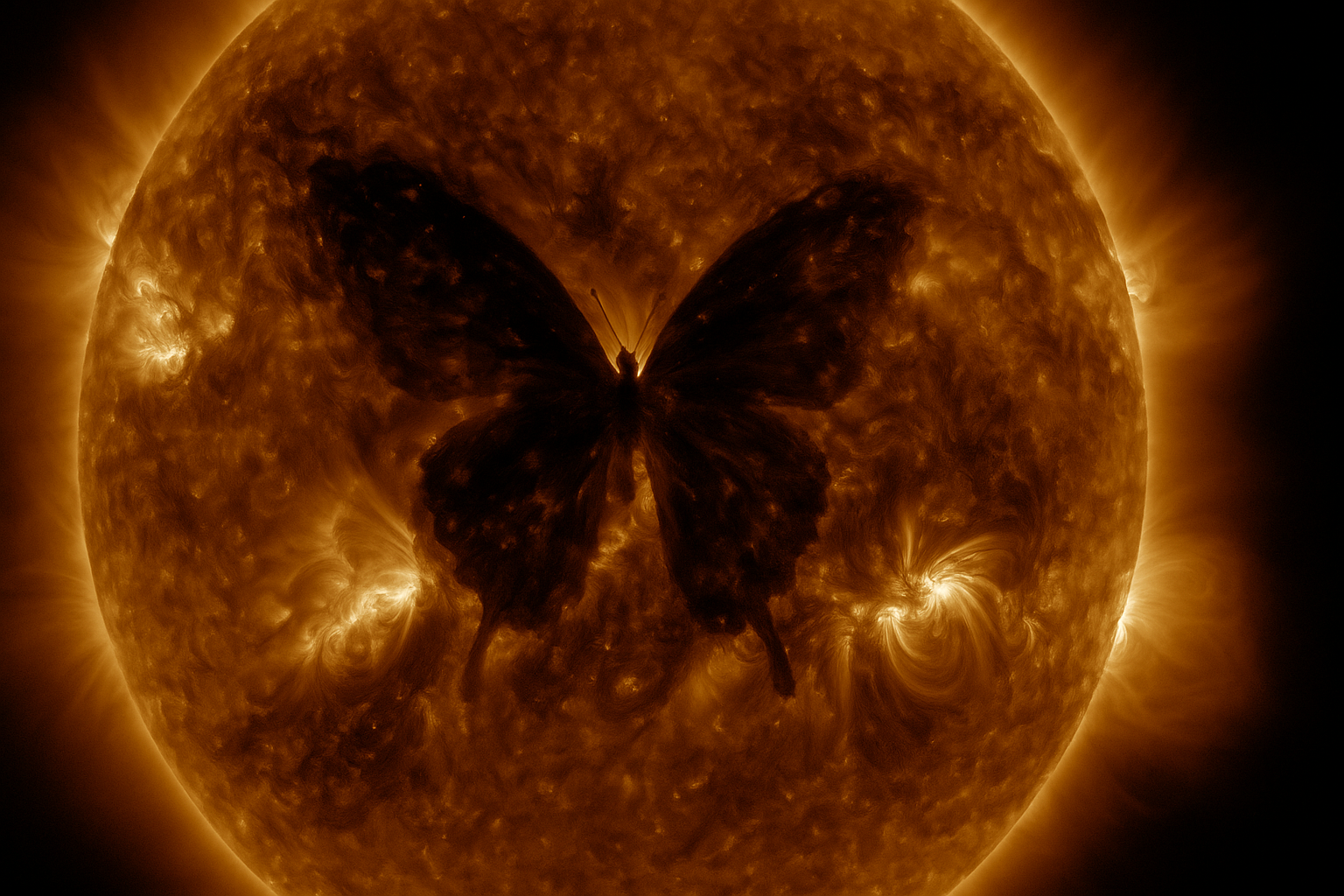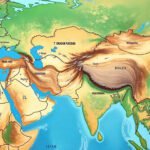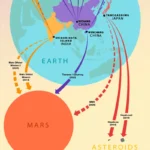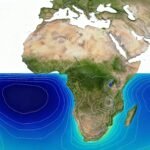If you’ve seen the viral claim that a “butterfly was spotted on the Sun”, you might be wondering — is it real or just clickbait?
The truth is fascinating. While there isn’t a literal butterfly flying across our star, what scientists have actually captured is a butterfly-shaped coronal hole — a rare solar phenomenon that looks strikingly like the wings of a giant cosmic insect.
Here’s the science behind the viral image — and why it matters for Earth.
What Exactly Was Seen?
Astronomers studying images from NASA’s Solar Dynamics Observatory (SDO) recently noticed an enormous dark patch forming on the Sun’s surface. But this wasn’t a shadow or a burn mark — it was a coronal hole, a region in the Sun’s outer atmosphere where magnetic field lines open outward into space.
Coronal holes are cooler and less dense than their surroundings, so they appear as dark regions in ultraviolet or X-ray images. This one caught everyone’s attention because of its shape — a perfect butterfly silhouette, stretching across a region more than 20 times the size of Earth.
Social media quickly dubbed it “The Butterfly on the Sun”, turning a routine solar event into a viral moment.
What Is a Coronal Hole?
To understand it, imagine the Sun’s outer layer — the corona — as a sea of superhot plasma threaded with invisible magnetic field lines.
Normally, these field lines loop back into the Sun, trapping plasma. But sometimes, they open up, allowing streams of high-speed solar wind to escape. These open regions appear dark in images — that’s a coronal hole.
Scientists regularly track these holes because they’re key to understanding space weather — how solar activity affects Earth’s atmosphere, power grids, and satellites.
When one of these holes faces Earth, it releases charged particles that travel across space and can trigger auroras — glowing northern and southern lights.
How Does It Affect Earth?
The “butterfly-shaped” coronal hole isn’t just pretty — it’s powerful.
As it rotates into view facing Earth, streams of high-speed solar wind are expected to reach our planet within 2–3 days. This could cause mild to moderate geomagnetic storms, especially near the poles.
In simple terms:
More chances to see auroras in higher latitudes. Slight fluctuations in satellite communications and radio signals.
Minor disruptions in GPS accuracy or power systems (if the storm intensifies).
NASA and NOAA’s Space Weather Prediction Center keep close watch on these patterns to issue alerts if stronger storms are expected.
Why It Looks Like a Butterfly
Humans are great at finding familiar shapes in randomness — a phenomenon called pareidolia. It’s the same reason we see faces in clouds or animals in rock formations.
In this case, the coronal hole’s pattern happened to resemble two symmetrical wings with a central body, perfectly mimicking a butterfly’s silhouette.
Though purely coincidental, it’s a reminder of how nature’s patterns repeat — from microscopic forms on Earth to massive magnetic fields on the Sun.
Fun Fact: The Sun Has Patterns Too
Solar physicists often observe recurring shapes on the Sun, especially during solar maximum — the most active phase of the 11-year solar cycle.
At these times, the Sun’s magnetic field becomes extremely tangled, producing more sunspots, flares, and coronal holes. So, while a butterfly shape is rare, seeing artistic symmetry in solar structures is not unusual during peak activity.
What Makes This Event Special
This isn’t the first time humans have spotted “creatures” on the Sun. In past decades, observers have seen coronal holes resembling hearts, birds, and even skulls. But this butterfly stands out for its sheer scale and symmetry, making it one of the most beautiful solar events captured in recent years.
It’s also perfectly timed — as our Sun approaches Solar Maximum (2025), we’ll see more such dramatic patterns, stronger auroras, and possibly some of the most intense solar activity in decades.
Summary Table
| Concept | Explanation |
|---|---|
| What Was Seen? | A coronal hole shaped like a butterfly, not an actual object. |
| What Is a Coronal Hole? | A region where magnetic lines open, releasing solar wind. |
| Size of Event | Around 20–23 times Earth’s diameter. |
| Effect on Earth | Possible auroras, mild geomagnetic storms, minor tech impacts. |
| Scientific Meaning | Indicator of magnetic activity during the solar cycle. |











